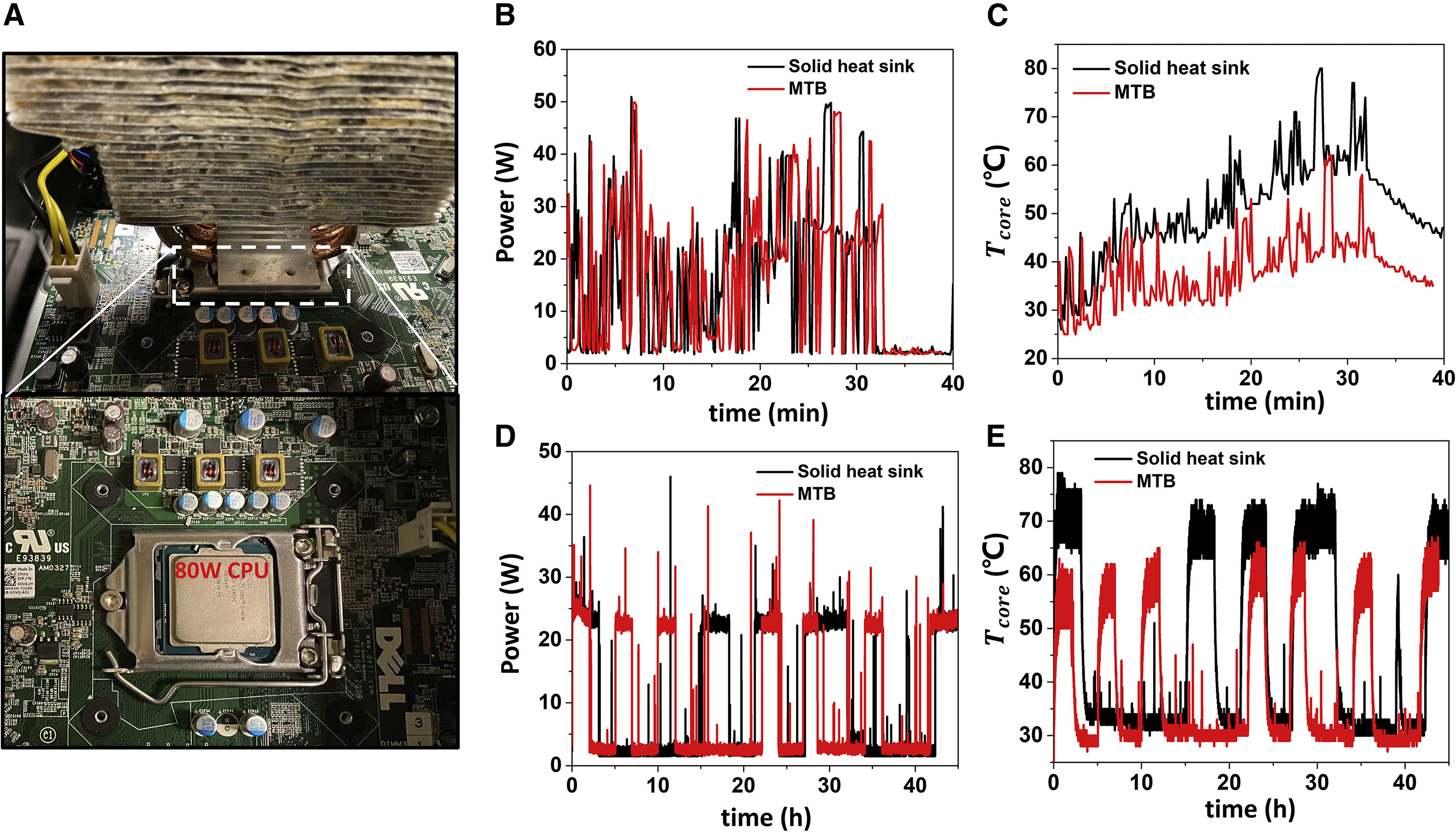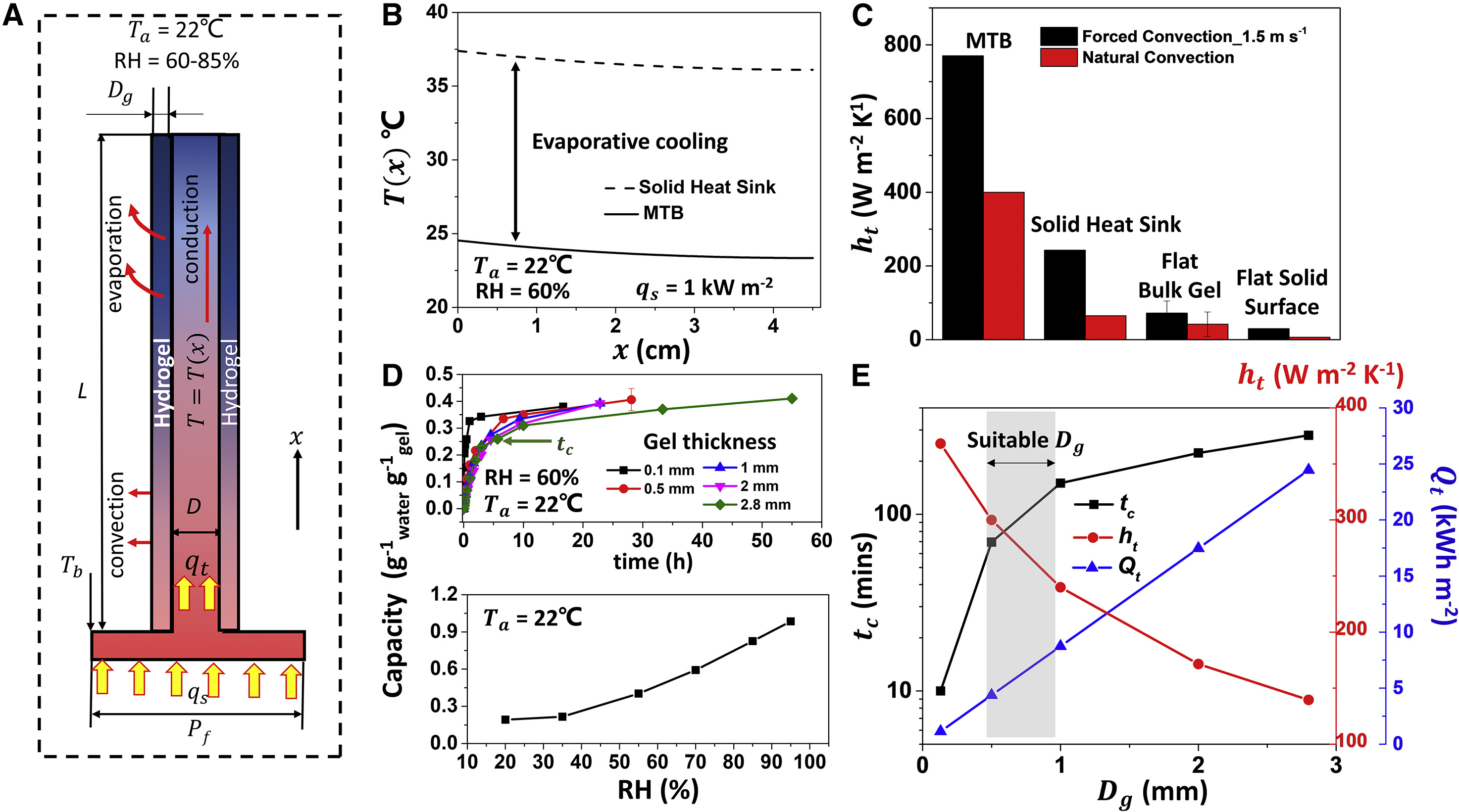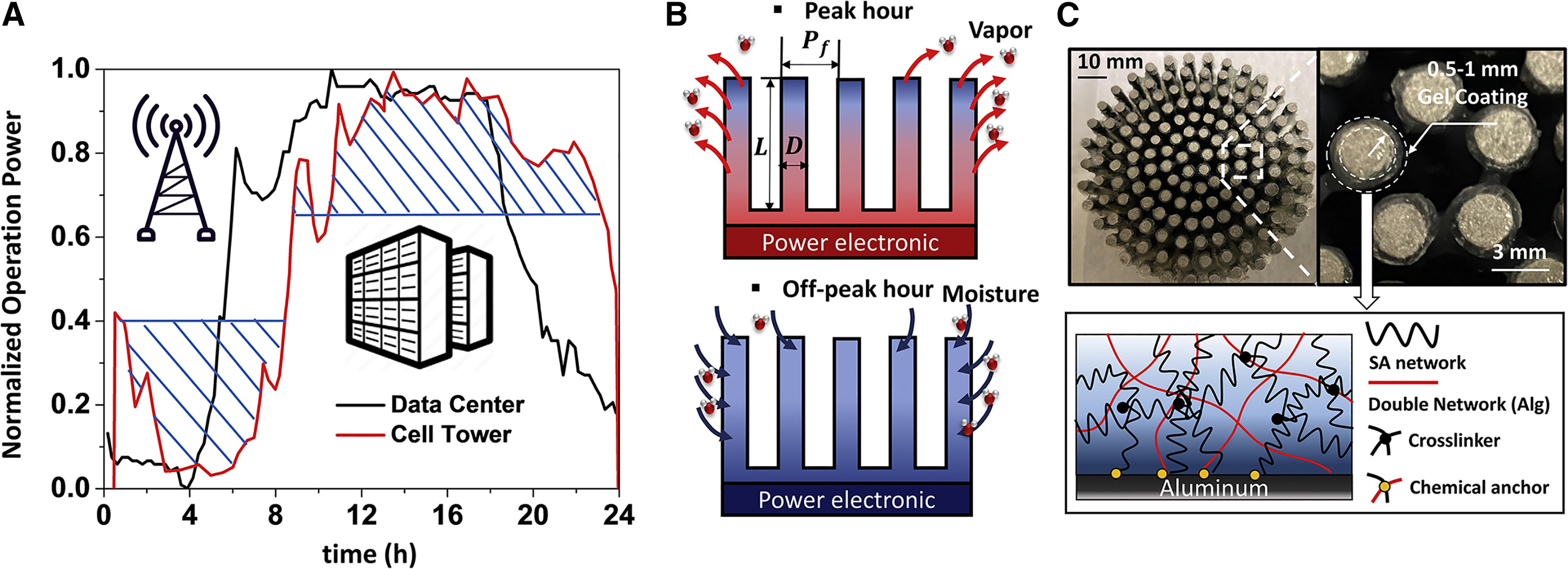Hydrogel Coated Heatsinks Significantly Boost Passive CPU Cooling Capabilities
A 15C drop compared to the heatsink alone
A paper shared on Cell Reports Physical Science suggests coating heatsinks with hydrogels delivers a “significant” benefit to passive cooling. The paper highlights the testing of a hydrogel-based moisture thermal battery (MTB) for passive thermal management of electronics such as a 100W FET and an 84W Intel Core i5-4690 CPU. Test results are encouraging, with the MTB making the electronics components run approximately 15°C cooler than a heatsink alone. Caveats apply, naturally.
In a preamble to the research discussion, the scientists from the University of California remind us that cooling electronics is a necessary but expensive business, with the main costs being energy and water usage and the environmental impact of using those resources. If passive cooling can be improved, it could be of great benefit in trimming such overheads.
Hydrogel coatings cool in a similar way to how an animal sweats. The scientists explain that when the electronics are under load, the hydrogel will release water that evaporates to create a cooling effect. When the electronics are idling, this allows the hydrogel to recharge its moisture content, getting ready for the next workload.
From that description you can probably sense that hydrogel cooling is a great fit for applications with cyclical workloads. The scientists give examples of a 5G cell tower and a data center, both with 12 hour high-load to low-load cycles.




Tests were completed with the aforementioned 100W FET and 84W Intel CPU, and in both cases MTB cooling performance is “significantly higher than previously reported passive cooling methods.” The comparison tests were run at a room temperature of 22°C, and relative humidity (RH) of 70%. The 15°C delta seems a very worthwhile improvement. Humidity helps the MTB recharge between thermal loads being applied. It would thus work particularly well in the tropics — locations like Florida, Hong Kong, Singapore, Taiwan, etc. — where relative humidity can be 80–90%.
In situations where the MTB isn’t sufficient on its own, it can be leveraged in hybrid solutions alongside heat pipes, vapor chambers, or liquid circulation loops. However, there are ways to tune the MTB for your particular use case. For example, the MTB responds positively to having a larger surface area and thinner hydrogel coating, where design constraints allow. Another thing in favor of the MTB is that the scientists claim it is a scalable solution, with a relatively low price of $12 per unit.
The scientists conclude that ideal applications for the MTB are in the “thermal management for 5G chips, power batteries, server/data centers, and optoelectronics.” Device use following the ideal cyclical nature needed for MTB water recharging from humidity might fit with your usage of a device like an HTPC. But this is clearly still in the test phases.
We would have liked to see a chart showing what happens if the workload doesn’t run along a smooth cycle, so the hydrogel is unable to recharge. It would also be interesting to see results at higher power draws, since modern CPUs can easily reach into the 200W and higher range. Would the hydrogel stop delivering its 15°C delta, or would it even break down under a long sustained thermal load? These are perhaps questions for future research.
Get Tom's Hardware's best news and in-depth reviews, straight to your inbox.

Mark Tyson is a news editor at Tom's Hardware. He enjoys covering the full breadth of PC tech; from business and semiconductor design to products approaching the edge of reason.
-
ezst036 Will dust stick to it? How hard will that be to clean off after a few years of becoming a blanket?Reply
Even completely fanless passive computers get dust in them. -
Kamen Rider Blade If you apply this to every cooling surface of your electronics, I wonder how much lower the overall temperature would be.Reply -
PlaneInTheSky Cool, we're going to cool our chips with the same stuff found in breast implants.Reply -
mikewinddale ReplyIt would thus work particularly well in the tropics . . . where relative humidity can be 80–90%.
Presumably, only for outdoor fixtures like cell towers? I would expect that any indoor location would have a dehumidifier to reduce the humidity to around 40 to 50 percent right? At 80 to 90 percent humidity, I would expect the interior walls to be covered in mold. -
bolweval Reply
Additionally, would it run off the heatsink?ezst036 said:Will dust stick to it? How hard will that be to clean off after a few years of becoming a blanket?
Even completely fanless passive computers get dust in them. -
Dsviceroy Where would we buy this and what? Is this even accessible to us.Reply
Or simply memeing :P -
Udyr Reply
Not at all. Some tropical locations usually build with cinder blocks and concrete, and apply an initial paint coat to the finished structure before applying the final decorative layer. Even structures made of other materials are treated to prevent the excessive humidity from seeping through and create mold or rust.mikewinddale said:Presumably, only for outdoor fixtures like cell towers? I would expect that any indoor location would have a dehumidifier to reduce the humidity to around 40 to 50 percent right? At 80 to 90 percent humidity, I would expect the interior walls to be covered in mold.
What the article fails to mention or consider is the salinity levels present in said locations, which would probably affect the longevity of the material. -
CelicaGT For those wondering this works exactly like heat pipes and vapour chambers except it is using water in the air and on the external surfaces. The amount of heat energy to effect a phase change (latent heat) of a substance is FAAAAR greater than to simply heat up a substance without phase change (sensible heat). This is the basis for all phase change cooling whether in be passive such as this and vapour chambers, or active, such as that window shaker AC unit you rely on to keep that janky gaming rig from heating up your room. Cool stuff for sure but as noted in TFA it works best in bursty loads.Reply -
terabite Reply
i don't know where you live, but here in Argentina, humidity above 80% is an everyday thing, and there are no issues with it. We regularly get 100%, and the highest AVERAGE year-round humidity is 77% in Mar del Plata, yet it doesn't mean you'll get mold on your wallsmikewinddale said:Presumably, only for outdoor fixtures like cell towers? I would expect that any indoor location would have a dehumidifier to reduce the humidity to around 40 to 50 percent right? At 80 to 90 percent humidity, I would expect the interior walls to be covered in mold.
